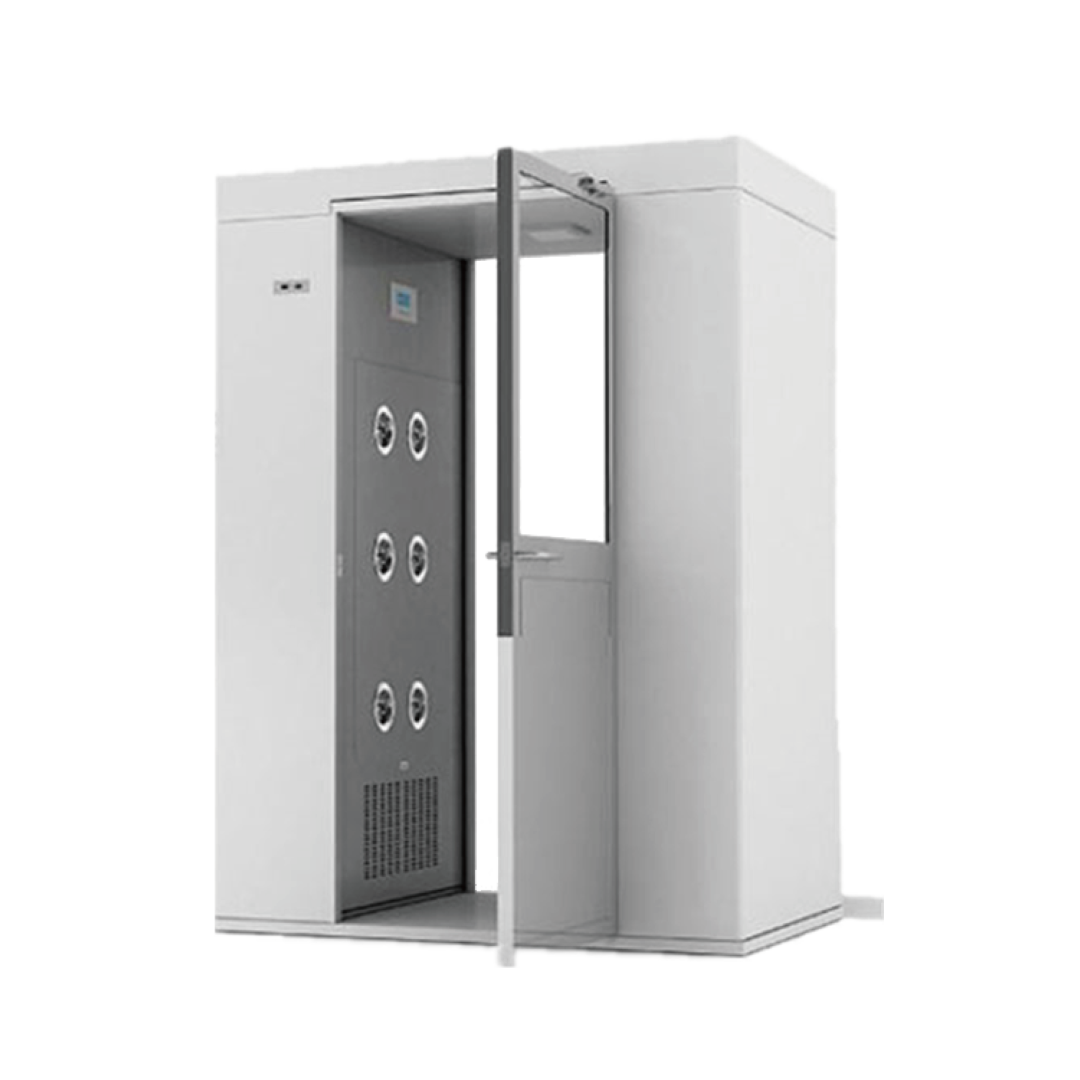
No wasted money and efficient production at the same time! Guidelines for Energy-saving Planning and Design of Electronic Cleanrooms
No wasted money and efficient production at the same time! Guidelines for Energy-saving Planning and Design of Electronic Cleanrooms
The construction of an electronic workshop is aimed at providing reliable environmental conditions for the production of electronic products. The production environment is closely related to the production of electronic products. A suitable production environment can enhance the performance, yield and reliability of the products; otherwise, it will have a significant impact on the production of the products.
LED/ liquid crystal/circuit board manufacturing is a highly precise industry. Even minor environmental or operational changes may affect the quality of the finished products. Therefore, the manufacturing process must be carried out in a strictly controlled clean room. A cleanroom is a closed space that uses multiple layers of filtration to remove particles from the air and keeps the temperature and humidity inside the room at a constant state.
From the preparation of LED/ liquid crystal/circuit board chips to device packaging, there are high requirements for the air quality of the production environment. Air quality is related to the yield rate and product quality. Among the numerous technological processes, which one is the key to preventing pollution? The cleanliness has already met the standards. Why is there still contamination on the product? With the same process and environmental parameters, why is our energy consumption higher than others'? What kind of cleanroom planning and design scheme is the most energy-efficient, most in line with process requirements, with low investment, low operating costs and high production efficiency?
Now, let's talk about some basic requirements and characteristics of the clean room in an electronics factory
What are the characteristics of air movement in laminar flow cleanrooms in electronics factories?
It has the following characteristics: All suspended particles in the room remain in motion within the laminar flow layer.
The air moves in a laminar flow manner, causing all suspended particles in the room to move within the laminar flow layer, which can prevent suspended particles from coalescing into large particles.
2. The relative increase in air flow rate causes particles to float in the air instead of accumulating and settling down. At the same time, there will be no blockage in the indoor air, which can prevent cross-contamination of drug powders. The laminar flow air entering the room has now been filtered through high-efficiency filters to meet the requirements of sterility. The newly generated pollutants indoors can be quickly carried away by laminar flow air and discharged outdoors.
What matters should be noted in the clean room of an electronics factory?
1. Purification equipment engineering: Select appropriate purification equipment based on the actual situation.
2. For ground works, the main concerns are: whether to have anti-static functions.
3. For color steel plate projects, what materials are needed, including the moisture retention and fireproof functions of color steel plates?
4. Central air conditioning projects, including constant warmth and humidity functions.
5. For air duct engineering, the elements to be considered include the pressure of the air duct and the air supply volume.
What are the tips for choosing purification equipment in the clean room of an electronics factory?
Fan filter units and high-efficiency supply air outlets are the best terminal equipment for cleanrooms in dust-free workshops. What are the tips for choosing them?
1. The requirement for humidity: Some industries have relatively strict requirements for humidity, such as electronics, printing, solid food, etc. A particular issue is static electricity. Generally speaking, the lower the humidity, the stronger the static electricity. When choosing purification equipment for clean rooms in electronics factories, this aspect should also be taken into consideration.
2. The specific requirements for the purification level, generally speaking, the higher the level, the greater the demand for the direction of the airflow. If fan filter units and air conditioning cabinet units are selected at this time, it will inevitably directly affect the cleanliness.
3. Temperature requirements: The fan filter unit is equipped with its own fan and can independently supply air. Therefore, it can operate without continuous central air conditioning ducts. For those with not very high temperature requirements, a fan filter unit or a high-efficiency air supply outlet can be selected.
What materials are selected for clean rooms in electronics factories and what are their characteristics?
1.What methods can be adopted in the clean workshop of an electronics factory to reduce the amount of dust produced?
A. Selected raw materials: Cotton has the highest dust production, followed by cotton, Dacron, anti-static pure polyester, and nylon in sequence.
B. Style: The dust-generating capacity of the gown type is the largest, followed by the top-bottom separate type, and the full cover type is the least.
C. Activities within the workshop: The amount of dust generated during operation is generally 3 to 7 times that at the moment of cessation.
D. Cleaning: The dust production from solvent scrubbing is reduced to one fifth of that from cleaning with regular water.
2. It has excellent moisture retention performance, high strength, heat insulation and heat preservation. The thermal conductivity of the core material is λ<=0.041w/mk. High strength: It can be used as a load-bearing board for ceiling enclosure planning, with good bending and compressive resistance.
3. Easy to construct and lightweight: 10-14 kilograms per square meter, equivalent to 1/30 of a brick wall. For the partition walls and ceiling slabs of purification workshops, 50mm thick plywood is generally selected. Moreover, the color steel plate equipment is sensitive and convenient: the construction period is short, and the workshop can be adjusted according to production needs. With the use of color steel plate walls, the workshop renovation and construction become even more convenient.
4. Air supply and filtration equipment: The high-efficiency air supply outlet is made of stainless steel structure, which is beautiful and clean. The perforated mesh plate is made of baked paint aluminum plate, which does not rust or accumulate dust and is easy to clean. The supply and return air ducts are made of hot-dip galvanized steel plates and covered with purification and insulation cotton.
Before installing the high-efficiency filter equipment, it is necessary to thoroughly clean and wipe the clean room. If there is any accumulated dust inside the purification air conditioning system, it should be cleaned and wiped again to meet the cleanliness requirements. If high-efficiency filters are installed in the technical mezzanine or ceiling, the technical mezzanine or ceiling should also be thoroughly cleaned and wiped clean.
The filter scanning leak detector is a powerful assistant to ensure the quality of the filter and is used for inspection when the filter is ready for acceptance after installation. The Suxin SX-L310S filter counting leak detector can precisely test the sealing performance of the filter, promptly identify potential leakage issues, and ensure that the filtration effect of the filter reaches the best state.
Case
Here, let's take an example: This project is located in a certain electronics company. The cleanroom has a purification area of 110 square meters, with a purification level of 10,000 grade, and the designed ceiling is 2.8 meters.
5.1 Design Basis:
"Code for Design of Clean Rooms" (GB50073-2001)
Code for Design of Heating, Ventilation and Air Conditioning (GBJ19-87)
Code for Construction and Acceptance of Ventilation and Air Conditioning Works (GB50243-97)
"Code for Construction and Acceptance of Cleanrooms" (GB50041-92)
The technical parameter requirements such as the process layout plan provided by XX Electronic Company;
5.2. Design Conditions (Design Parameters) :
The temperature requirement for the clean workshop is 20℃ to 25℃.
The humidity requirement is 45% to 65%.
The cleanliness requirement is 10,000 grade.
5.3. Factory Building Layout:
High-efficiency filters are adopted at the end of the air conditioning system. The clean air conditioner is installed in the formwork room, and the floor load-bearing capacity must meet the operating load requirements of the equipment.
A. Clean Area: The clean workshop with a cleanliness level of 10,000 covers an area of approximately 110 square meters.
The clean front area is equipped with a shoe-changing area for personnel, changing rooms, air showers, etc., to isolate external contamination.
The direction of personnel flow in the clean area: changing shoes and changing clothes once - air shower room - clean workshop.
Safety doors should be installed in the purification workshop to facilitate personnel evacuation. An air filter is required before entering the air shower room.
The direction of material flow in the clean area: transfer window - clean workshop - transfer window - other processes
B. Other areas: To be the responsibility of Party A and not within the scope of this design plan.
5.4. Design Principles of Clean Air Conditioning Systems
The principle of reasonable investment: The initial investment should conform to the principle of economic conservation and also meet the requirements of each production position for a clean environment such as temperature, humidity and cleanliness.
The principle of economic operation: Consider energy conservation, reliable operation, simple maintenance, and reduce future operation and maintenance costs. The saved operating costs are in line with long-term economic principles.
Durability principle: The wall panels are made of high-quality PU color steel plates. The main materials such as the mainframe are selected from well-known manufacturers and brands.
The principle of advanced technology: The supply air outlet of the purification system adopts a constant air volume valve design, which, in combination with the environmental monitoring system, ensures that all parameters in the clean area remain constant and saves energy consumption.
5.5. Clean System Solution:
System process: Fresh air, after being filtered, is mixed with return air and enters the air-cooled air conditioner. It passes through the medium-efficiency filter and the low-resistance high-efficiency filter at the end, and then the air that meets the requirements of temperature, humidity and cleanliness is sent into the clean room.
Air flow organization: In all 10,000-level rooms, top supply and return air on both sides are adopted. Inside the workshop, technical mezzanine return air ducts are used at column positions and side walls, and the return air ducts are connected to the air handling units. The air is sent into the clean room after passing through coarse, medium and high-grade filters and undergoing temperature and humidity treatment. The fresh air system undergoes group, medium and two-stage filtration to ensure a low dust concentration in the air, reduce the influence of external dust sources, enhance the purification effect of the clean room, significantly extend the service life of high-efficiency filters, and reduce operation and maintenance costs. The fresh air volume is determined through calculation based on the personnel hygiene fresh air requirements (fresh air volume per person > 35m³/h) and to ensure the positive pressure requirements within the clean room. (no more than 20 people).
System exhaust: For rooms with equipment exhaust and process requirements, the system plan shall be determined by Party A.
5.6. Refrigeration Station configuration:
Refrigeration main unit: According to the requirements of Party A, if the air conditioning system is divided into one zone, then the air conditioning main unit is designed as one unit, which adopts an air-cooled constant temperature and humidity type air conditioner. The air volume is 12,000 m³/h, the cooling capacity is 34KW, and the heat capacity is 36KW.
Cold source capacity configuration plan: The designed cooling load for the clean workshop is 34KW. A 15-horsepower air-cooled constant temperature and humidity type air conditioner is adopted, with a cooling capacity of 34KW, which meets the requirements. The plan comprehensively takes into account the actual operational characteristics of the air conditioning system. It not only has sufficient installed capacity but also ensures the continuous and reliable operation of the clean workshop. Moreover, it saves initial investment and is economically viable in operation.
Air ducts and insulation: The air ducts of the purification air conditioning system are made of high-quality galvanized sheets and sealed in accordance with the specifications. All air ducts except the fresh air and exhaust ducts need to be insulated. High-quality aluminum foil glass wool felt/glass wool pipe for insulation material: thickness 40mm, 24K, thermal conductivity: below 0.03kcal/mh℃, cold water pipe: 50mm/56K insulation cotton.
5.7. Cleanroom decoration
Ceiling: Double-layer high-quality insulated (PU) color steel plates are used in the clean area and production area, which are dust-free, bright, grayish-white in color, and 50mm thick. It meets the clean and anti-static requirements of electronic factories.
The clean area and the sanitary area are surrounded and separated by double-sided color steel insulation (PU) boards. In the clean workshop, arcs and concave corner interfaces are made at intervals with the ground and at corners without splashes to prevent dust accumulation and facilitate hygiene and cleaning.
Airtight door: Single door: 900*2000, with a glass observation window on top (the same size as the flat window on the partition wall), equipped with a passage lock, the door and door frame are made of non-湫 steel.
Floor: Anti-static standard A. The cement floor in the clean area should be treated and then coated with 3mm anti-static epoxy flooring. Complies with the European EN548 standard and requirements. Fire resistance performance complies with: DIN4102-1, B1 grade; flame resistance complies with ISO06923: difficult to burn; anti-static property < +/-100V; Chemical resistance complies with EM423: resistant to dilute acids, oils, ethanol, acetone, stone solvents, etc. It has the characteristics of not attracting dust or ash.
Columns: The columns in the clean area are fully edged with color steel plates and serve as the interlayer for return air technology.
Air shower room: According to the specification requirements, the air shower room in the clean room is designed for two people, totaling two.

5.8. Lighting and Power Distribution:
40WX2 exposed dust-proof lamps with covers for cleanrooms (Class 10,000).
The illuminance in the working area should be greater than 250Lux, and that in the walkway should be greater than 100Lux. For areas with fine processing operations, local lighting can be adopted.
Wiring is carried out in accordance with national standards, with concealed installation using conduit pipes, meeting fire prevention and electrical usage regulations.
All pipelines passing through the clean area should be properly sealed, and the inner holes (inner grooves) of the pipeline troughs should be fully sealed.
The air pipes and water pipes entering the clean room must also be sealed. Pipes that can be installed on the ceiling should be installed on the ceiling to keep the workshop clean and tidy.
All power distribution and sockets shall be the responsibility of Party A. The control box of the purification air conditioning system is the responsibility of the design party. Lighting and power distribution shall be designed and manufactured in accordance with relevant national standards and the requirements of Party A, meeting the requirements of production and management for equipment operation and control.
-
2025/06/07
Must-read for photovoltaic enterprises: Decoration Design Plan for 100,000-level Purification workshop
As the core engine of energy transformation, the photovoltaic energy storage industry has put forward multi-dimensional and strict requirements for cleanliness, temperature and humidity accuracy, chemical pollution prevention and control, and energy efficiency in its production process. As a professional service provider in the field of new energy purification, we offer full-process environmental solutions that meet standards for key links such as photovoltaic module manufacturing, energy storage battery production, and system integration, helping enterprises achieve sustainable development goals of high yield and low energy consumption. -
2025/06/07
Construction standards and design key points of GMP purification workshops for Biopharmaceuticals/Pharmaceutical factories
As a biopharmaceutical enterprise, the entire production process must meet GMP standards to ensure the quality of drugs. The GMP purification workshop technology of biopharmaceutical enterprises is one of the main means to ensure the successful implementation of GMP. Then, what knowledge about cleanrooms does a pharmaceutical manufacturing enterprise need to know? -
2025/06/07
A well-built food workshop must be safe and efficient: Key points to note in design and construction
The food and daily chemical industries are directly related to people's health. Their production environments have strict requirements for microbial control, prevention and control of foreign matter contamination, and guarantee of raw material stability. As a professional service provider in the field of food and daily chemical purification engineering, we offer customized cleanroom solutions that comply with GMP, HACCP and ISO 22000 standards based on the production characteristics of different sub-sectors, helping enterprises achieve quality upgrades and compliant production.


 WhatsApp
WhatsApp
